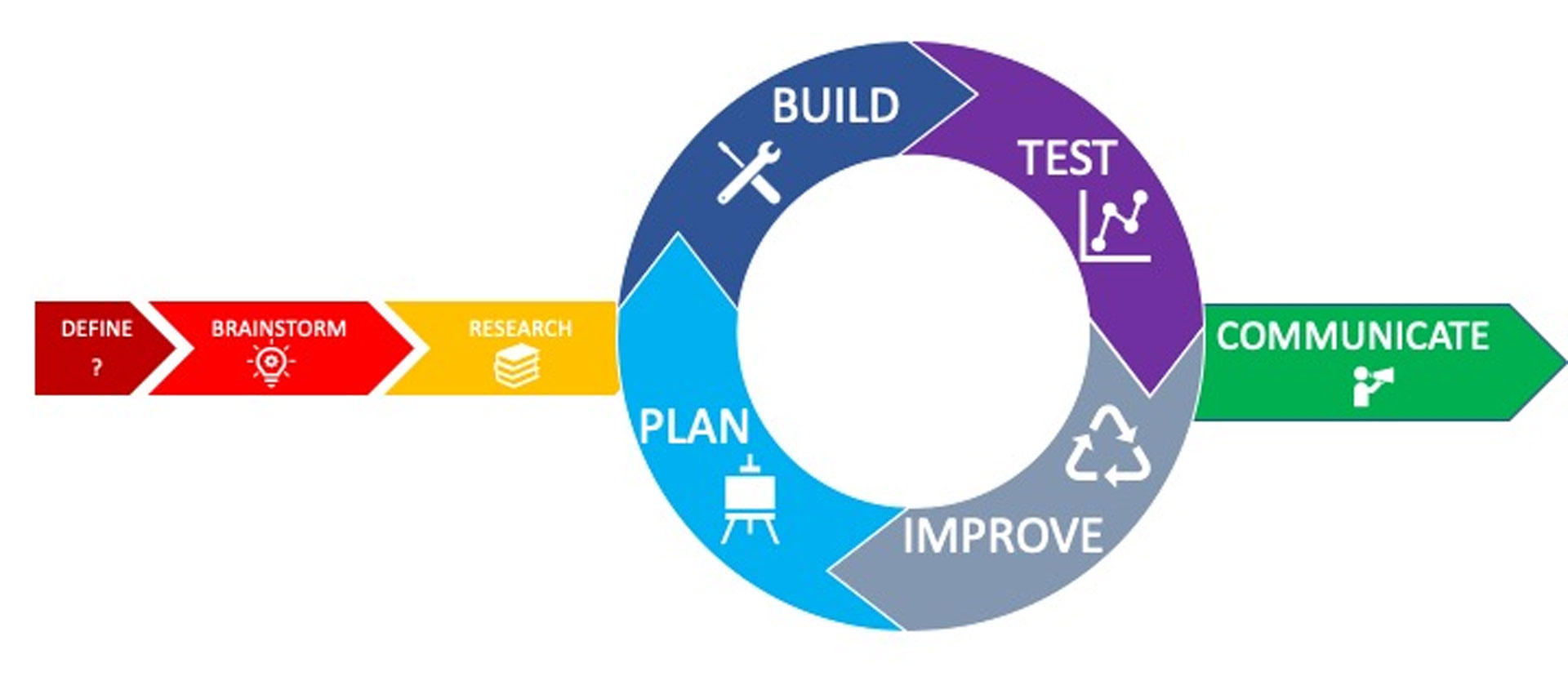Teaching Engineering
Engineering Design Process (EDP)The following content was retrieved from Virginia Standards of Learning for Science. For more information, visit https://www.doe.virginia.gov/testing/sol/standards_docs/science/2018/index.shtml
Science utilizes observation and experimentation along with existing scientific knowledge, mathematics, and engineering technologies to answer questions about the natural world. Engineering employs existing scientific knowledge, mathematics, and technology to create, design, and develop new devices, objects or technology to meet the needs of society. By utilizing both scientific and engineering practices in the science classroom, students develop a deeper understanding and competences with techniques at the heart of each discipline.

Engineering Design Process image based on the National Aeronautics and Space Administration (NASA) engineering design model.
Engineering design process are similar to those used in an inquiry cycle; both use a system of problem solving and testing to come to a conclusion. However, unlike the inquiry cycle in which students ask a question and use the scientific method to answer it, in the engineering and design process, students use existing scientific knowledge to solve a problem. Both include research and experimentation; however, the engineering design process has a goal of solving a societal problem and may have multiple solutions.
Engineering Design Process:
- Define: Define the problem, ask a question
- Imagine: Brainstorm possible solutions
- Research: Research the problem to determine the feasibility of possible solutions
- Plan: Plan a device/model to address the problem or answer the question
- Build: Build a device/model to address the problem or answer the question
- Test: Test the device/model in a series of trials
- Improve: Using the results of the test, brainstorm improvements to the device/model; return to Plan phase
- Share: Communicate your results to stakeholders and the public
